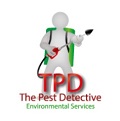Pest Control - Beetles
Categories
SIGNS OF RODENTS
WHAT TO LOOK FOR
Beetle Control

Facts Identification & Control
Beetles belong to the insect order Coleoptera. This is the largest order of insects. There are more than a quarter million species of beetles in the world. In North America, scientists have identified more than 25,000 beetle species.
How to Identify a Beetle Issue
Sometimes people mistake cockroaches for beetles. If the beetle is an adult, it can usually be identified by looking at the wings.
Beetles have well-developed antennae and chewing mouthparts, as well as shell-like front wings known as elytra. These front wings are often very hard and appear more like a shell than wings. The beetle folds the front wings so they cover the back wings. They are durable and waterproof, serving as protection against damage and dehydration. However, unlike many other insects, most beetles are poor fliers. Most adult beetles seem to have a line down their back where the two front wings meet.
Size
Beetles come in many shapes, sizes and colors. Some, like the click beetles, are long and slender. Some beetles like lady beetles and June beetles (also known as June bugs) have an oval or rounded shape. There are even beetles that resemble spiders.
Behaviour, Diet and Habits
Beetles develop in a four-stage life cycle. Scientists call this a complete metamorphosis. The stages are egg, larva, pupa and adult. The length of the life cycle also varies according to the type of beetle. Some beetles develop very quickly and they can produce more than one generation each year. Others, like some of the wood-boring beetles can take several years to decades to develop from an egg to an adult insect. The length of the life cycle also depends on the amount of food that is available for the larvae to eat as well as environmental conditions. Adult beetles often deposit their eggs near the food that the larvae will eat when they come out of the eggs.
What Do Beetles Eat?
Beetles feed on plants, small insects and animal fibres, depending on species. A few beetles are considered pests in gardens and crops, although some species, such as the ladybird beetle, may benefit humans by killing harmful insects.
Problems Caused by Beetles
Some beetles can become destructive pests. Carpet beetle larvae eat natural fibers and feathers. They often damage woolens and other fabrics. Other beetles, like powderpost beetles, feed on hardwoods and bamboo. These pests attack furniture and other items made of wood.
Some, like the flour beetles and the grain beetles, attack food products in homes. They also damage food in production facilities and stores. Some beetles damage lawns and landscapes. Immature June beetles, called grubs, attack the roots of grass. The elm leaf beetle damages trees by eating the leaves.
Beetle Control

Facts Identification & Control
Beetles belong to the insect order Coleoptera. This is the largest order of insects. There are more than a quarter million species of beetles in the world. In North America, scientists have identified more than 25,000 beetle species.
How to Identify a Beetle Issue
Sometimes people mistake cockroaches for beetles. If the beetle is an adult, it can usually be identified by looking at the wings.
Beetles have well-developed antennae and chewing mouthparts, as well as shell-like front wings known as elytra. These front wings are often very hard and appear more like a shell than wings. The beetle folds the front wings so they cover the back wings. They are durable and waterproof, serving as protection against damage and dehydration. However, unlike many other insects, most beetles are poor fliers. Most adult beetles seem to have a line down their back where the two front wings meet.
Size
Beetles come in many shapes, sizes and colors. Some, like the click beetles, are long and slender. Some beetles like lady beetles and June beetles (also known as June bugs) have an oval or rounded shape. There are even beetles that resemble spiders.
Behaviour, Diet and Habits
Beetles develop in a four-stage life cycle. Scientists call this a complete metamorphosis. The stages are egg, larva, pupa and adult. The length of the life cycle also varies according to the type of beetle. Some beetles develop very quickly and they can produce more than one generation each year. Others, like some of the wood-boring beetles can take several years to decades to develop from an egg to an adult insect. The length of the life cycle also depends on the amount of food that is available for the larvae to eat as well as environmental conditions. Adult beetles often deposit their eggs near the food that the larvae will eat when they come out of the eggs.
What Do Beetles Eat?
Beetles feed on plants, small insects and animal fibres, depending on species. A few beetles are considered pests in gardens and crops, although some species, such as the ladybird beetle, may benefit humans by killing harmful insects.
Problems Caused by Beetles
Some beetles can become destructive pests. Carpet beetle larvae eat natural fibers and feathers. They often damage woolens and other fabrics. Other beetles, like powderpost beetles, feed on hardwoods and bamboo. These pests attack furniture and other items made of wood.
Some, like the flour beetles and the grain beetles, attack food products in homes. They also damage food in production facilities and stores. Some beetles damage lawns and landscapes. Immature June beetles, called grubs, attack the roots of grass. The elm leaf beetle damages trees by eating the leaves.
SIGNS OF RODENTS
WHAT TO LOOK FOR
Many beetles are beneficial insects. The lady beetle (often called ladybug) feeds on plant pests like aphids and mealybugs. Gardeners appreciate these beetles and try to keep them in the garden.
Sometimes beetles, including lady beetles and ground beetles, can become nuisances. In the late summer and fall, homeowners can find hundreds of these beetles clustered on the outside of the home. The beetles are trying to invade homes for shelter through the winter or are looking to escape inclement conditions.
What Pest Detective Does
There are three basic groups of beetles that may require treatment inside our homes and businesses: food product beetles, wood-destroying beetles and fabric-infesting beetles. While the specific treatment procedures and methods may vary based on the specific diet and habitat of the pest beetle, the components of an effective and efficient treatment closely follow those of a comprehensive integrated pest management program.
Pest Detective Discounts
Armed Forces Discount

Pensioner Discount

Categories
Have Any Question!
DON'T HESITATE TO CONTACT US ANY TIME.
Have Questions ?
Call us now
Head Office: 01202 042814
About Pest Detective
We specialize in 23 different kinds of pest, and we're also qualified to handle a much wider range of pest control needs. If you have a pest problem that's not covered in our pest library, be sure to contact us for information about what services we offer for your particular needs.
We are open
on Call
24 hours - 7 days a week
Services
Need support?
Drop us an email
Contact us
Locations
- The Pest Detective - 01202 042814
- Pest Detective Poole - 01202 042814
- Pest Detective Bournemouth - 01202 042814
- Pest Detective Blandford - 01258 395021
- Pest Detective Ringwood - 01425 896029
- Pest Detective Wareham – 01929 498149
- Pest Detective Dorset - 01305 360649
- Pest Detective Dorchester - 01305 360649
PEST DETECTIVE SOCIAL
PEST DETECTIVE SOCIAL
PEST DETECTIVE COVERAGE
Poole: Branksome, Broadstone, Canford Cliffs, Sandbanks,, Charminster, ,Hamworthy, Oakdale, Upton, Westborne, Canford Heath, Parkstone, Penhill, Lytchett Minster, West Parley, West Moors, and Wimborne.
Bournemouth: Ashley Heath, Boscombe, Charminster, Moordown, Kinson, Kings Park, Queens Park, Winton, Ferndown , Southbourne, Meyrick Park, Pokestown, Mudeford ,Verwood, West Parley, West Moors and Highcliffe.
Blandford: Child Oakford, Milton Abbas, Sturminster Marshall, Sturminster Newton, Hazelbury Bryan, Marnhull, Tarrent Hinton, Milborne St Andrew, Witchampton and Wimborne.
Wareham & Swanage: Purbecks, Bere Regis, Bindon Abbey, Corfe castle, Worth Matravers, Moredon and Wool.
Ringwood: West Hampshire, Bransgore, Burley, Fordingbridge, Highcliffe and New Milton.
Dorset: Poole, Bournemouth, Christchurch, Wareham, Swanage, Purbecks, Wimborne, Blandford, Ringwood, Dorchester and Weymouth..
Dorchester & Weymouth: Abbotsbury, Puddletown, Upwey, Portland and Warmwell.
© 2016 The Pest Detective - All Rights Reserved | Site Map | Terms & Conditions | Privacy Policy

